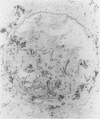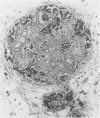Abstract
AIMS: To study the pathological features of fungal infections affecting the lower intestinal tract (duodenum, small and large bowels). METHODS: Between mid-1981 and mid-1991, 14 cases of deep mycotic infections affecting the lower intestinal tract were found among 890 consecutive necropsies on patients with malignant disease treated in a regional cancer centre (incidence 1.6%). These 14 cases accounted for 54% of all gastrointestinal fungal infection detected. The relevant clinical, necropsy, histological and microbiological data were reviewed. RESULTS: Candida spp and Aspergillus spp accounted for all infections. The macroscopic appearances included ulcers of varying configuration, mucosal flecks, sloughed mucous membranes, polypoid masses and segmental lesions. Either organism could produce this range of lesions, but Candida tended to have a mucosal location and Aspergillus was associated with transmural invasion. Combined infections showed Candida in the surface mucosa and Aspergillus hyphae in submucosal vessels with spread into the bowel wall in a radiating pattern. During the final illness, gastrointestinal symptoms and signs were often slight and microbiological investigations were unhelpful. CONCLUSIONS: Variable gross appearances are relevant for endoscopists, particularly lesions which resemble pseudomembranous colitis. Endoscopic biopsy specimens may have a role in antemortem diagnosis. Failure to diagnose these infections during life emphasises the importance of necropsy in the clinicopathological audit of deaths in this group of patients.
Full text
PDF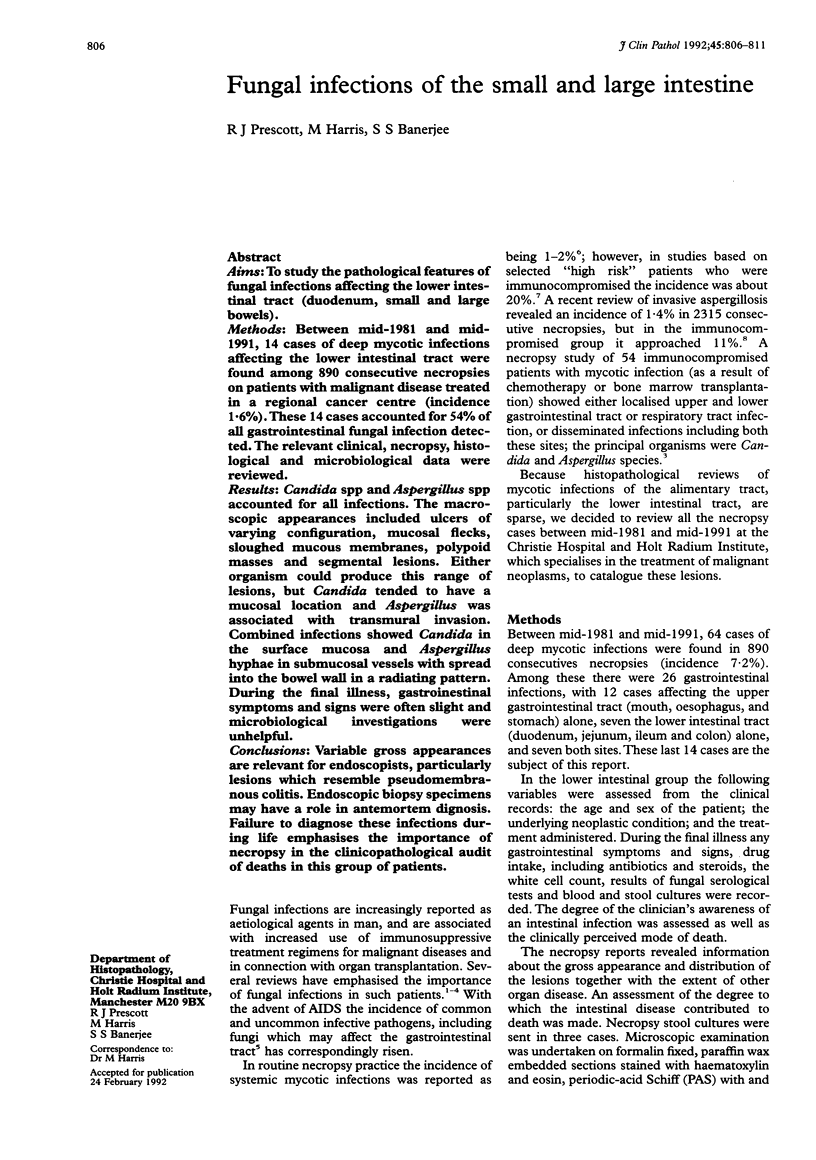


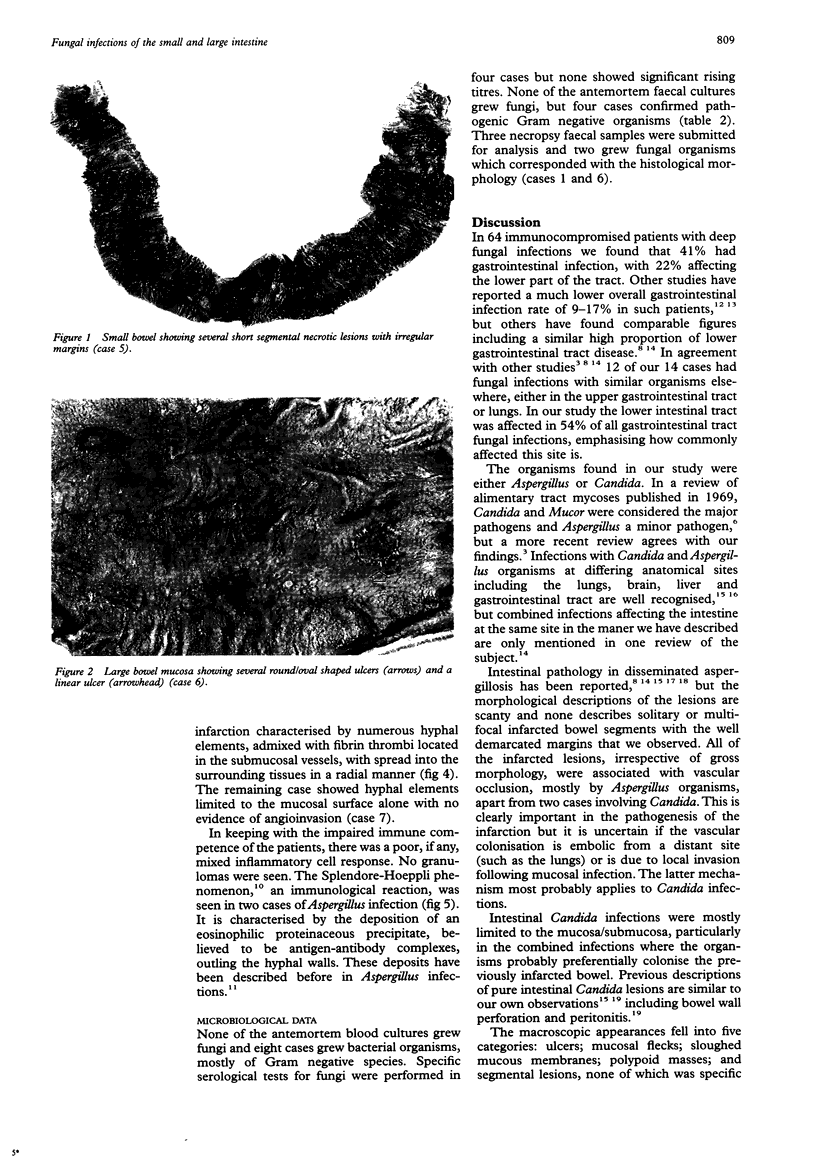
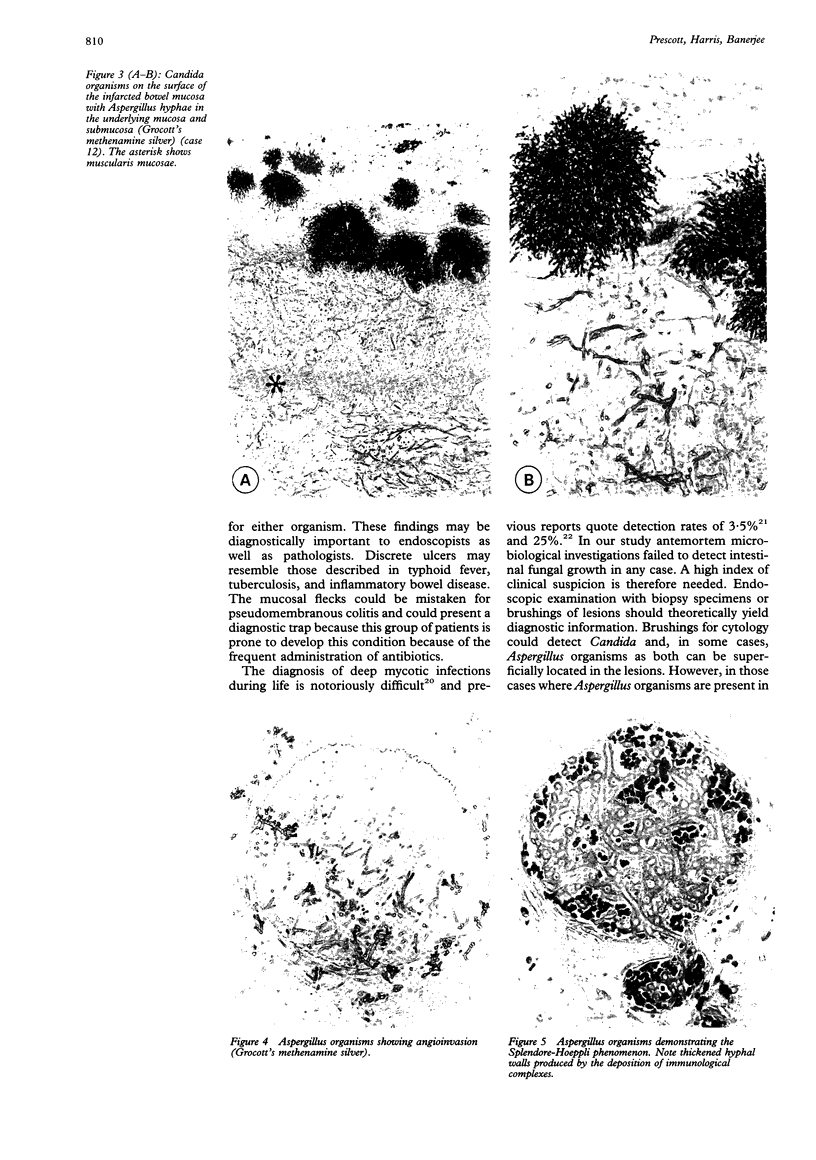
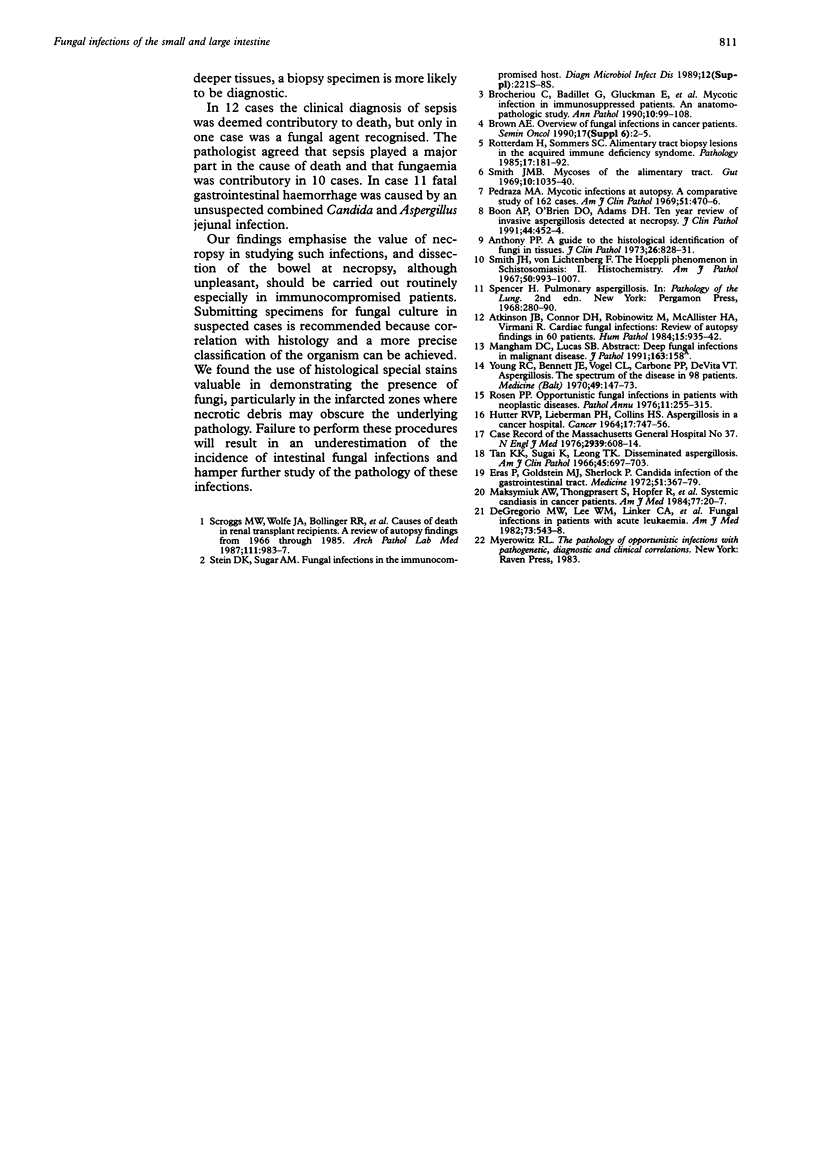
Images in this article
Selected References
These references are in PubMed. This may not be the complete list of references from this article.
- Anthony P. P. A guide to the histological identification of fungi in tissues. J Clin Pathol. 1973 Nov;26(11):828–831. doi: 10.1136/jcp.26.11.828. [DOI] [PMC free article] [PubMed] [Google Scholar]
- Atkinson J. B., Connor D. H., Robinowitz M., McAllister H. A., Virmani R. Cardiac fungal infections: review of autopsy findings in 60 patients. Hum Pathol. 1984 Oct;15(10):935–942. doi: 10.1016/s0046-8177(84)80123-9. [DOI] [PubMed] [Google Scholar]
- Boon A. P., O'Brien D., Adams D. H. 10 year review of invasive aspergillosis detected at necropsy. J Clin Pathol. 1991 Jun;44(6):452–454. doi: 10.1136/jcp.44.6.452. [DOI] [PMC free article] [PubMed] [Google Scholar]
- Brocheriou C., Badillet G., Gluckman E., Kuffer R., de Roquancourt A., Verola O., D'Agay M. F., Lesourd A. Les infections mycosiques chez les immunodéprimés. Etude anatomo-pathologique. Ann Pathol. 1990;10(2):99–108. [PubMed] [Google Scholar]
- Brown A. E. Overview of fungal infections in cancer patients. Semin Oncol. 1990 Jun;17(3 Suppl 6):2–5. [PubMed] [Google Scholar]
- DeGregorio M. W., Lee W. M., Linker C. A., Jacobs R. A., Ries C. A. Fungal infections in patients with acute leukemia. Am J Med. 1982 Oct;73(4):543–548. doi: 10.1016/0002-9343(82)90334-5. [DOI] [PubMed] [Google Scholar]
- Eras P., Goldstein M. J., Sherlock P. Candida infection of the gastrointestinal tract. Medicine (Baltimore) 1972 Sep;51(5):367–379. doi: 10.1097/00005792-197209000-00002. [DOI] [PubMed] [Google Scholar]
- HUTTER R. V., LIEBERMAN P. H., COLLINS H. S. ASPERGILLOSIS IN A CANCER HOSPITAL. Cancer. 1964 Jun;17:747–756. doi: 10.1002/1097-0142(196406)17:6<747::aid-cncr2820170610>3.0.co;2-d. [DOI] [PubMed] [Google Scholar]
- Khoo T. K., Sugai K., Leong T. K. Disseminated aspergillosis. Case report and review of the world literature. Am J Clin Pathol. 1966 Jun;45(6):697–703. doi: 10.1093/ajcp/45.6.697. [DOI] [PubMed] [Google Scholar]
- Maksymiuk A. W., Thongprasert S., Hopfer R., Luna M., Fainstein V., Bodey G. P. Systemic candidiasis in cancer patients. Am J Med. 1984 Oct 30;77(4D):20–27. [PubMed] [Google Scholar]
- Pedraza M. A. Mycotic infections at autopsy. A comparative study in two university hospitals. Am J Clin Pathol. 1969 Apr;51(4):470–476. doi: 10.1093/ajcp/51.4.470. [DOI] [PubMed] [Google Scholar]
- Rosen P. P. Opportunistic fungal infections in patients with neoplastic diseases. Pathol Annu. 1976;11:255–315. [PubMed] [Google Scholar]
- Rotterdam H., Sommers S. C. Alimentary tract biopsy lesions in the acquired immune deficiency syndrome. Pathology. 1985 Apr;17(2):181–192. doi: 10.3109/00313028509063754. [DOI] [PubMed] [Google Scholar]
- Scroggs M. W., Wolfe J. A., Bollinger R. R., Sanfilippo F. Causes of death in renal transplant recipients. A review of autopsy findings from 1966 through 1985. Arch Pathol Lab Med. 1987 Oct;111(10):983–987. [PubMed] [Google Scholar]
- Smith J. H., Von Lichtenberg F. The Hoeppli phenomenon in schistosomiasis. II. Histochemistry. Am J Pathol. 1967 Jun;50(6):993–1007. [PMC free article] [PubMed] [Google Scholar]
- Smith J. M. Mycoses of the alimentary tract. Gut. 1969 Dec;10(12):1035–1040. [PMC free article] [PubMed] [Google Scholar]
- Stein D. K., Sugar A. M. Fungal infections in the immunocompromised host. Diagn Microbiol Infect Dis. 1989 Jul-Aug;12(4 Suppl):221S–228S. doi: 10.1016/0732-8893(89)90140-5. [DOI] [PubMed] [Google Scholar]
- Young R. C., Bennett J. E., Vogel C. L., Carbone P. P., DeVita V. T. Aspergillosis. The spectrum of the disease in 98 patients. Medicine (Baltimore) 1970 Mar;49(2):147–173. doi: 10.1097/00005792-197003000-00002. [DOI] [PubMed] [Google Scholar]






